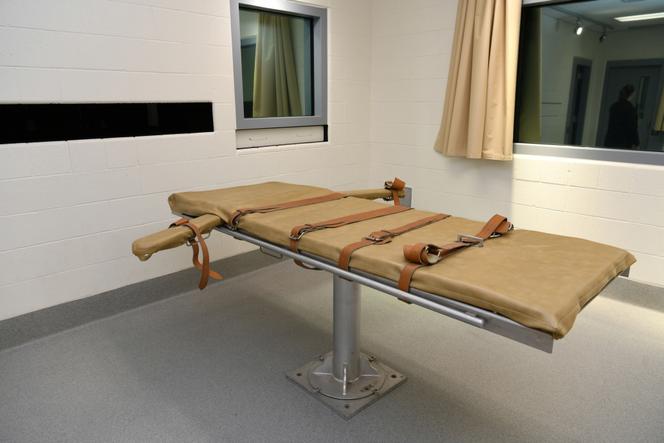


The death penalty is on the rise in the United States. A new execution has been scheduled for November 1, the 21st since the beginning of the year. Barring a last-minute reprieve, Richard Moore is scheduled to be executed in South Carolina. On October 17, Alabama executed Derrick Dearman, responsible for the murder of five people in 2016. Dearman had abandoned his appeal and asked to be put to death.
Five more inmates were executed in the space of a week between September 20 and 26. Seven executions are scheduled between now and the end of the year, in seven states, all of them Republican. Since capital punishment was reinstated in 1976, 1,602 people have been executed in the US. Since 2000, the number of executions fell sharply from 98 in 1999 to 11 in 2021. It is on the rise again: There were 24 in 2003; already 20 this year.
Experts say several factors explain this return to the death penalty. The composition of the Supreme Court, which now has a conservative majority, is not conducive to reprieve decisions, which block executions at the last minute. The political climate is also to blame. At a time of national stiffening on security issues, Republican governors and attorney generals are less inclined to commute convicts' sentences or take racial disparities into account. In South Carolina, Richard Moore's defenders argued that he was convicted by an all-white jury and that the crime he committed, the murder of a store clerk, would not have merited a death sentence had he not been Black.
A notable exception is the case of 57-year-old Robert Roberson, sentenced to death in 2003 for the murder of his 2-year-old daughter. His execution was halted on October 17 by the Texas Supreme Court after a group of elected officials asked to hear his testimony. A high-profile case, given that he would be the first person executed for the – controversial – Shaken Baby Syndrome, and that he has maintained his innocence for over 20 years. The case sparked debate about the extent to which the courts can keep pace with scientific developments.
Another reason for the upsurge in executions is the evolution of methods. Ten years ago, pharmaceutical laboratories, mainly in Europe, stopped authorizing the use of their drugs in the cocktail of sedatives used for lethal injections. States that still apply the death penalty (around 10 out of 50) have found new combinations of lethal substances. Some are now considering fentanyl and ketamine. In July 2022, Alabama executed a condemned man by nitrogen inhalation, a world first denounced by the UN.
You have 41.57% of this article left to read. The rest is for subscribers only.
